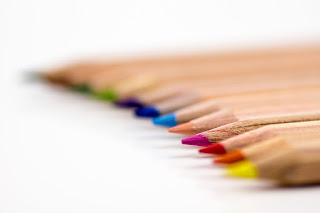Colouring in: Therapeutic tool, soul food or nonsense?
Colouring in: Therapeutic tool, soul food or nonsense?
I have fond memories of sitting with my Aunty Karen at Grandma’s house and colouring in. I used to be amazed how she could turn a set of black and white lines into a kaleidoscope of colour with just 12 coloured pencils. I enjoyed the time I spent with her and the treats that Grandma was sure to bring.
Today colouring in has become the next best self-help tool. I too own a new set of pencils and colouring book. Many web pages and blogs claim to colour in can have a positive effect on mood, increased self-expression, increased focus, help you engage in meditation and spark creativity by embracing your inner child.
But yet when researching this topic I struggled to find journals or peer-reviewed articles. Could this be because adult colouring is a new topic or are the above claims false? Also, why don't I experience this positive kick? Why when I coloured in gift tags for Christmas I was so proud to stick them on the presents, but I haven't coloured in since?
A study done in 2005, shows that colouring in a mandala or structured picture for 20 minutes can help decrease anxiety within a short term (1). It combines elements of both Art-therapy (colouring and form)and meditation (deeply concentrating on an experience that is soothing), however, should not be labelled as either.It can be used as a therapeutic tool in a structured group; however, colouring for pleasure has not been researched.
As occupational therapists, we regard individuals as occupational beings who benefit from active engagement in meaningful occupation/ activities (2). The key here is that the activity needs to be meaningful.
I realised that even though colouring in is promoted as a spoon conservation activity it still takes spoons. When I am doing something, I often feel like there needs to be a goal. I need to feel like I’m not wasting my spoons. So if I had to choose between trying out a new recipe or colouring in, you would find me baking. The lack of meaning I find in adult colouring is possibly the reason why it doesn’t tickle my fancy.I also realised that my childhood experiences normally involved others. So perhaps a colour club where the main aim is socialisation could still draw me in.
So should you colour in or not?
My suggestion is to print out a free sample (there are many ideas on Pinterest) and engage in some experiential therapy. Try it out! If you feel it could be a hobby or something you enjoy go ahead and you may experience the positive spin-offs . All occupations are said to have beneficial ‘spin-offs’, the most known being health benefits for the individual (3,4).
- Let clients self-rate their anxiety pre and post activity
- Provide a pre-drawn mandala and a set of good quality coloured pencils per person
- The mandala must be complex, require attention and provide structure and direction to a client's process.
- Clients should be encouraged not speak during the process, but to rather focus on the repetition of the design and the act of doing.
- Clients’ should be encouraged to share regarding their change in emotional states and not necessarily an in-depth view into their personal designs.
References:
- Curry N and Kasser T 2005 ‘Can Coloring Mandalas Reduce Anxiety?’ Art therapy: Journal of the American Art Therapy Association vol. 22 (2) pp. 81-85
- Wilcock, AA 1993 ‘A Theory of the Human Need for Occupation’ Journal of Occupational Science: Australian, vol. 1, pp.17-24.
- Rebeiro, K L and Cook, JV 1999 ‘Opportunity, not prescription: An exploratory study of the experience of occupational engagement’ Canadian Journal of Occupational Therapy, vol. 66, pp.176-187.
- Hocking, C 2000 ‘Occupational Science: A stock take of accumulated insights’ Journal of Occupational Science, vol. 7, pp. 58-67.






I have used colouring-in in therapy with stroke patients as a task to aid in return to writing as well as a leisure activity. Because it is a 'trendy' thing to do in current culture, it is not considered as childish as it would have previously. It is a task they can do with family that is therapy but is a more 'normalised' activity. I think it has a lot of potential and the lack of research probably is indicative of its recency in culture.
ReplyDeleteI have been coloring since the new face came about!! I enjoyed it as a child and I still enjoy it today!! I find it very helpful when I am able to do it!! I have Fibro and RA in both wrists and my elbow along with many other places which doesn't allow me to color as much as I would like but I do find it helps with anxiety, depression, and focus!!
ReplyDeleteThis comment has been removed by the author.
ReplyDeleteI was diagnosed with Parkinson’s disease four years ago. After relying on medications with little relief, I turned to NaturePath Herbal Clinic out of hope. Within months, I noticed real improvements tremors subsided, balance improved, and my energy returned. It’s truly been life-changing.
ReplyDeleteIf you or a loved one is facing Parkinson’s, I highly recommend exploring their natural approach.Visit: www.naturepathherbalclinic.com | Email: info@naturepathherbalclinic.com